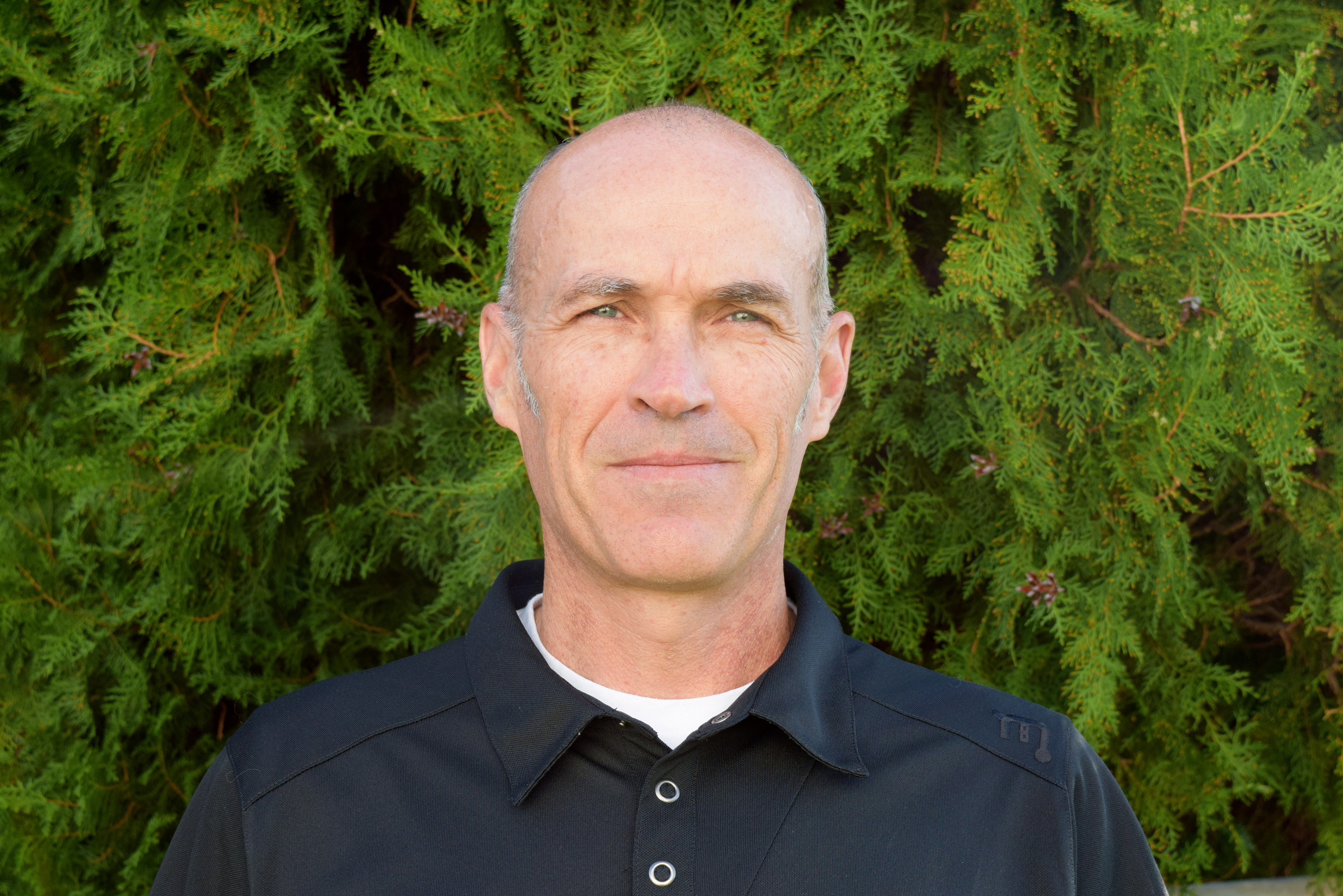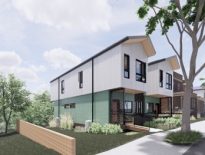7 Questions Answered by Miller Hull’s Living Building Challenge Services Director
This Q&A is a postscript to the Institute’s webinar on regenerative design, “Bringing the Living Building Challenge into Practice,” held on June 27, 2023. In this webinar, which is a dynamic extension of a new Ecotone Publishing book, Challenge & Change: Miller Hull’s Living Building Practice, we explore why and how the Miller Hull Partnership has become one of the world’s most prolific design firms.
Challenge & Change, the Member webinar, and this Trim Tab Q&A are designed to evoke further discussion about “How we tap into the ethos of the Living Building Challenge to create regenerative buildings and communities that are resilient, healthy, and equitable.” The backdrop is the firm’s extensive portfolio of Living Building Challenge projects. In this post, Ecotone’s Editor-in-Chief, Michael Berrisford, picks up the discussion with Miller Hull’s Chris Hellstern, AIA, LFA, Associate, and Living Building Challenge Services Director, about his experiences and thoughts on bringing regenerative design more deeply into all of our work.
Michael Berrisford: Chris, tell us a little bit about what led to you becoming Miller Hull’s Living Building Challenge Services Director.
Chris Hellstern: While I heard about the Living Building Challenge when it was first released in 2006, my real introduction came with Jason McLennan’s call to action to adopt it during the 2009 Living Future UnConference in Seattle. Immediately following that conference, a colleague of mine and I decided we needed to take his charge to heart and try to turn this into a real project—not just another case study reporting that these buildings were possible.
We coincidentally found a client in the Bertschi School in Seattle. They were looking to expand their campus with a new science building and had heard of the Living Building Challenge. We took that inspiration and created a full design and construction team that offered to design a Living Building for the Bertschi School pro bono. After a lot of work from the dedicated team and support from a great client who recognized the value of this type of project for generations of their students to come, we certified their project as the world’s fourth Living Building back in 2012.
Once I had completed my first Living Building project, I was committed. I wanted to find the next one, realizing that not only were these buildings possible, but that they were necessary and needed now. That led me to Miller Hull who pioneered the Living Building Challenge (LBC) in their own way with the world-changing Bullitt Center. Miller Hull’s practice evolved from completing that project and further solidified their commitment to sustainability. They see the value in designing Living Buildings and that commitment is one of the critical pieces that make it possible for us to achieve the six LBC certifications we have to date.
Miller Hull recognized the expertise I had gained with the Bertschi Living Building, and together with their commitment to continue these projects, we were able to create this specialty title for the sustainability director position I now hold. And at Miller Hull, I’m luckily not the only full-time sustainability director; alongside our department head , Jim Hanford—a long-time Principal and energy expert, —and Jay Hindmarsh—a fellow director bringing his own LBC experience. Together, the three of us, for our 120-person firm, get to touch every project in the office, helping to shift them as far into regenerative design as we can.
While Miller Hull is one of the best firms to be a part of because of our commitment and experience with sustainability, the task of achieving LBC is not easy as every project has its own circumstances and of course we want to see more building achieving this. It takes all of us who work in sustainability across this industry, pushing and supporting each other.
How has Miller Hull’s practice and culture come to align, support, and encourage client goals?
Fortunately, we often have very good clients who want to pursue a high level of sustainability. Clients come to us because of our portfolio of high-performing built projects and our excellent team of consultants in fields ranging from mechanical engineering to biophilic design. One of our goals is to align our clients’ sustainability values with what impacts are possible for their project.
We start with the values and performance targets that our clients have and find ways to build synergies from there. Often, our clients will have commendable and audacious goals to meet climate targets, and our job is to help connect the dots for how their project can help meet those goals. For clients that do not come with these goals, we work to show them what is possible for their projects in terms of regenerative design. It is a process we enjoy immensely because it also helps us get to know our clients and build our relationship on our shared values and mission. When we include a diverse group of project stakeholders in this process, we gain even more richness for opportunities to solve project challenges and design buildings that best respond to a particular community and their needs.
Sometimes, something as seemingly simple as your passion about a subject like sustainability, equity, or embodied carbon can be the spark that others need to follow your lead.
Can you give us a few of your favorite examples of how Imperatives of the Living Building Challenge translated into architectural responses?
With seven Living Building Challenge projects over the years and working with so many experts to help us find these solutions, choosing a few to highlight is certainly difficult.
Urban Agriculture – With every Living Building, our teams have always taken a unique approach to this Imperative, helping the Institute to expand the recognized opportunities to achieve it. On the Loom House project, our landscape architect looked to the site ecology and what naturally grows under the tall conifer canopies throughout the island to develop a mycological foraging forest. We inoculated nurse logs with mushrooms to provide agriculture the homeowners could use. The home also included some more traditional vegetable and fruit gardens, as well. In support of the equity intent of LBC, some of these gardens are open to the neighborhood.
Net Positive Water – Still one of my favorite examples of making an LBC Imperative a visible and interactive part of a building, the Bertschi School’s highlight of the water process is inspirational and functional. Responding to a student’s idea to have a “river flowing in the classroom,” our team exposed the rainwater collection with a glass-covered runnel that winds through the classroom and fills cisterns in the floor and garden. For the grey water treatment, students can see water they send down the sinks brought to the interior green wall of plants where they naturally uptake and treat the water in a closed-loop process. All of this allows students to participate in the hydrologic cycle and natural processes that LBC endeavors to protect.
Net Positive Carbon – I am going to talk briefly about two projects here to show the flexibility that design solutions can have with LBC Imperatives. First, with Loom House, our client took to heart the elimination of combustion sources. Although there are exceptions for fireplaces in residences within the LBC, our team sought to decommission the existing fireplace in the home’s renovation. Architecturally, we wanted to keep the design and massing of the original stone fireplace and chimney but the clients did not intend to build fires anymore. We worked closely with our interior designer, her lighting designer and our contracting team to pull off a new type of hearth. We carefully sealed the old chimney and inserted an LED sculptural element that mimics the color and flicker of a flame. This application brings the hygge and seeming warmth of a hearth without the harmful emissions.
Sometimes the idea of meeting net zero energy on a tenant improvement can seem impossible because of ownership complications. But on Miller Hull’s San Diego office tenant improvement, we were able to work with the building owner to allow the installation of our PV system on the building’s roof. With the owner now invested in the ideas of net positive energy, he was excited to support adding renewables on his roof. From an educational perspective, closely monitoring our operational energy use provided an opportunity for our own staff to understand how their choices throughout the day impacted energy demand, which led them to optimize their behavior in order to be more energy efficient. This process has helped us as designers in talking with our clients about the intricacies of energy saving in our buildings.
Red List – Often the most infamous Imperative from the LBC, the Red List effort is an important part of all our work—from Living Buildings to those projects that don’t even pursue a certification. My favorite part of the Red List is not an architectural response but rather a process. Since beginning work with the Red List back in 2009, we have seen the materials market respond and evolve. Designers around the world now know chemicals of concern to avoid and how to ask manufacturers for safer alternatives.
Manufacturers worldwide have responded with transparency documents and the invention of safer products. We have seen laws created and major public awareness to protect the public from some of these Red List chemicals. While we all have a long way to go to achieve the ideal conditions the Materials Petal seeks, the improvement over the years of this work has been noticeable and meaningful throughout our industry.
What advice do you have for junior/emerging design practitioners wanting to bring LBC into projects?
My suggestion would be to always ask what is possible. This was a simple revelation that started from my very first LBC project at the Bertschi School back in 2009. No matter your seniority or role, your contributions are important and can help shape the direction of a project. Sometimes, something as seemingly simple as your passion about a subject like sustainability, equity, or embodied carbon can be the spark that others need to follow your lead. Don’t be afraid to ask how your project can be better or approach a design challenge in a new way. Find ways to align your client’s goals with something from the Living Building Challenge and use that as a gateway to making a bigger sustainability commitment.
If you need more support for your interests, look at becoming Living Future Accredited (LFA) to gain more expertise about the LBC and its intent. And when you earn your LFA credential, it will help you be more recognized with your LBC expertise.
How do you get owners to overcome the obstacle of higher first costs for design and construction?
This ongoing struggle requires us all to reframe our thinking in terms of value.Our capitalistic economy does not yet recognize the true value of regenerative design—from the human health benefits, to the social equity improvements, and even the ecosystem services. We have to start thinking holistically and presenting that data to our clients. One way Miller Hull does this is through our Gap Analysis process which attempts to quantify some of these values for clients. We look at the savings in emissions avoided or costs of water saved, for example.
I want to also acknowledge that every one of our Living Building projects has been budget challenged—just like any other project we’ve designed. I’m sure you all can identify with that too. But what is different about LBC project budgets is that our clients maintain the values of the Challenge they committed to at the outset. They inherently know the many values of regenerative design and instead of cutting their renewable energy system or water treatment capabilities, they make other shifts in priorities. Sometimes our buildings don’t need to be quite as big as our clients first think. Sometimes our buildings won’t have the exterior cladding material first dreamed of in a sketch. Instead, we find ways to save the parts of the building that support occupant health, connect with our community, and reduce our emissions. These decisions are truly what will build the long-term value—far beyond the monetary—for our clients and communities, for generations to come.
Tell us more about “Regenerative Gap Analysis” and an example of a project that engaged in the Living Building Challenge as a result of your process with the client.
One of our most recent projects that has yet to certify, but is designed to meet the full Living Building Challenge—the Port of Seattle Maritime Incubation Center— is a great example. The Port has a set of environmental goals with an overall intent to simply be, “The greenest Port in North America.” While this goal may be broad, it is exactly the same forward-thinking intent of the Living Building Challenge.
Our team worked to show alignment between the Port’s aspiration and the world’s most rigorous, performance-based building certification program. We used our Regenerative Gap Analysis to show not only how the Imperatives of net positive water and energy align with Port’s goals for building performance, but how they would also save operational expenses and avoid risk over time. This analysis, along with our education session on the LBC, helped the Port to clearly see how the Certification aligns perfectly with the goals of their project and sustainability mission of the organization.
Once you do a Living Building, you realize that we have the architectural and engineering solutions to build these projects now.
Where can readers dig a little deeper into the details of Miller Hull’s Living Building practice, principles, processes, and projects?
Our latest Ecotone book release is Challenge & Change which details our path through pioneering the Living Building Challenge among new building types and integrating regenerative design throughout our practice. What I like about this book is not only the architectural details that are provided for the projects, but what we hope will be insights into the process that readers can build on to accomplish their own Living Buildings.
Once you do a Living Building, you realize that we have the architectural and engineering solutions to build these projects now. Often, the bigger challenge is the process and helping people understand that these buildings are possible. Miller Hull also recognizes that in order for sustainability to advance at the scale and pace we need, a less siloed approach is required. Sourcing other expertise helps us improve our work, and we want it all to be shared with the industry to inform who we can. We value what we learn from so many of our peer firms and industry experts working toward regenerative design. We see that Challenge & Change is one of the extensions of this.
Chris and Michael’s conversation reveals a glimpse at the genuine regenerative design mindset behind the Living Building Challenge. To dig into approaches and solutions that will benefit your work pick up a copy of Challenge & Change: Miller Hull’s Living Building Practice by Mary Adam Thomas. It’s a practical, beautiful, and inspirational resource for AEC professionals, academic audiences, and anyone interested in a holistic design culture dedicated to creating regenerative buildings and communities that are sustainable, healthy, and equitable.
Editor’s Notes: Membership comes with many benefits including discounts on books. Proceeds from publications re-circulate to support and renew the programs, research, education, and advocacy of the ILFI non-profit organization. Ecotone offers a full suite of publishing services for books and corporate reports. For more information, you are invited to contact Ecotone’s Editor-in-Chief at ecotone@living-future.org.



